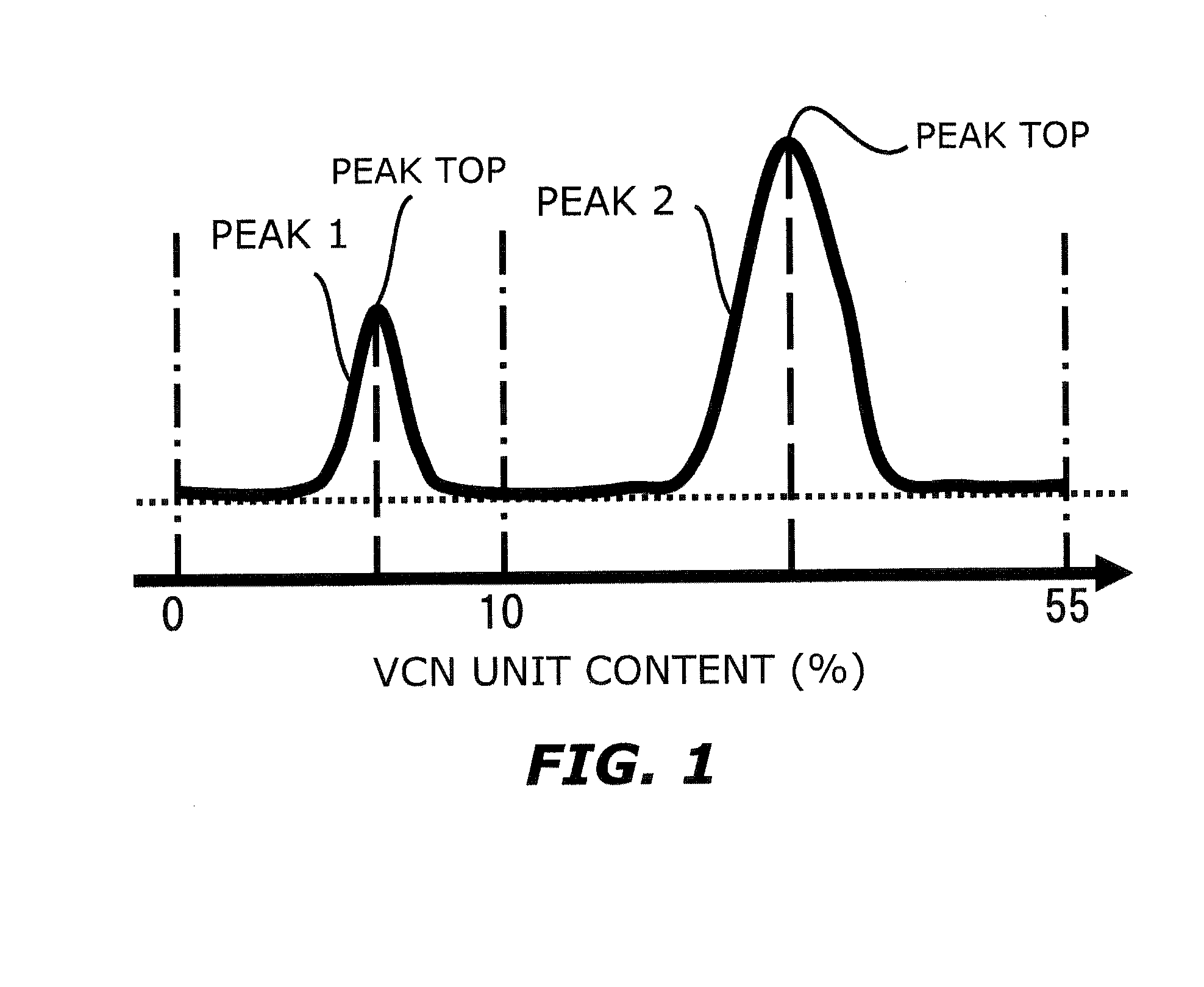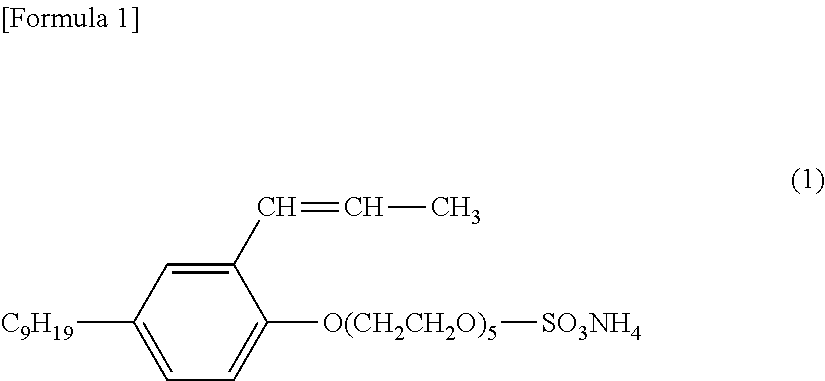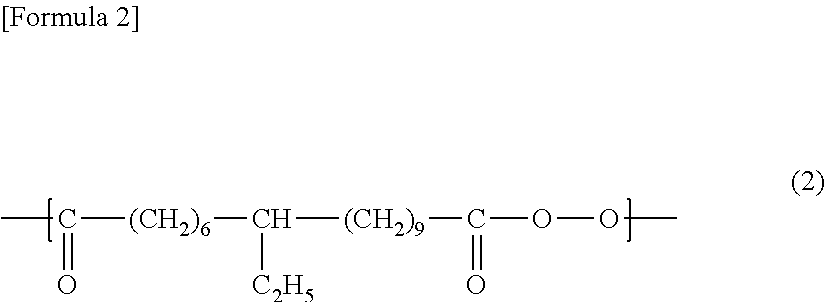Thermoplastic resin composition and molded article thereof
- Summary
- Abstract
- Description
- Claims
- Application Information
AI Technical Summary
Benefits of technology
Problems solved by technology
Method used
Image
Examples
reference example 1
Production of Rubber Latex (L-1)
[0141]Butadiene (18 parts by mass), acrylonitrile (2 parts by mass), deionized water (iron concentration: less than 0.02 ppm) (160 parts by mass), potassium rosinate (0.067 parts by mass), potassium oleate (0.033 parts by mass), tertiary dodecyl mercaptan (0.1 parts by mass), sodium hydroxide (0.03 parts by mass), sodium persulfate (0.075 parts by mass) and sodium bicarbonate (0.10 parts by mass) were placed in a pressure resistant container equipped with a stirrer and evacuated into vacuum. The temperature was increased from room temperature to 65° C. and polymerization was initiated. Two hours and a half after the initiation of polymerization, a butadiene monomer (80 parts by mass), tertiary dodecyl mercaptan (0.3 parts by mass), disproportionated potassium rosinate (0.67 parts by mass), potassium oleate (0.33 parts by mass), sodium persulfate (0.1 parts by mass), sodium hydroxide (0.05 parts by mass), sodium bicarbonate (0.15 parts by mass) and dei...
reference example 2
Production of Rubber Latex (L-2)
[0142]Butadiene (95 parts by mass), styrene (5 parts by mass), deionized water (iron concentration: less than 0.02 ppm) (135 parts by mass), potassium oleate (3.0 parts by mass), potassium persulfate (0.3 parts by mass), tertiary dodecyl mercaptan (0.2 parts by mass) and potassium hydroxide (0.18 parts by mass) were placed in a pressure resistant container equipped with a stirrer and evacuated into vacuum. The temperature was increased from room temperature to 70° C. and polymerization was initiated. Fifteen hours after initiation of polymerization, the reaction system was cooled to terminate the polymerization. In the obtained polymer solution, the content of a solid substance was 40 mass % and the mass average particle size of the solid substance was 80 nm.
reference example 3
Production of Rubber Latex (L-3)
[0143]To the rubber latex (L-2) (100 parts by mass) (solid substance) obtained in Reference Example 2, an emulsifier (0.1 parts by mass) represented by the following formula (1) was added. The mixture was stirred for 5 minutes and acetic acid (0.65 parts by mass) was added thereto. Subsequently, potassium hydroxide (0.65 parts by mass) was added to the mixture to obtain a rubber latex (L-3). In the rubber latex (L-3), the mass average particle size of a rubbery polymer was 360 nm. The rubber latex (L-3) did not produce coagulum and was a high-density coagulated latex having a solid substance of 37 mass %. In the rubber latex (L-3), the mass fraction of a solid substance having a particle size of 600 nm or more was 8 mass %.
PUM
| Property | Measurement | Unit |
|---|---|---|
| Fraction | aaaaa | aaaaa |
| Fraction | aaaaa | aaaaa |
| Percent by mass | aaaaa | aaaaa |
Abstract
Description
Claims
Application Information
 Login to View More
Login to View More - R&D Engineer
- R&D Manager
- IP Professional
- Industry Leading Data Capabilities
- Powerful AI technology
- Patent DNA Extraction
Browse by: Latest US Patents, China's latest patents, Technical Efficacy Thesaurus, Application Domain, Technology Topic, Popular Technical Reports.
© 2024 PatSnap. All rights reserved.Legal|Privacy policy|Modern Slavery Act Transparency Statement|Sitemap|About US| Contact US: help@patsnap.com










